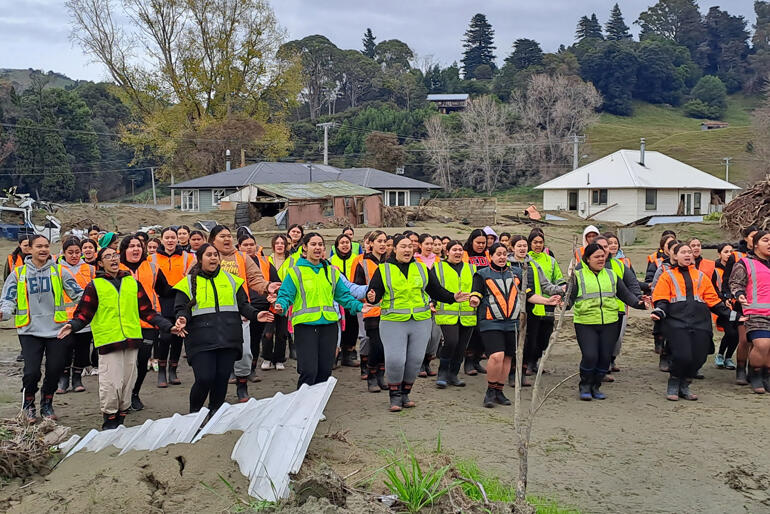
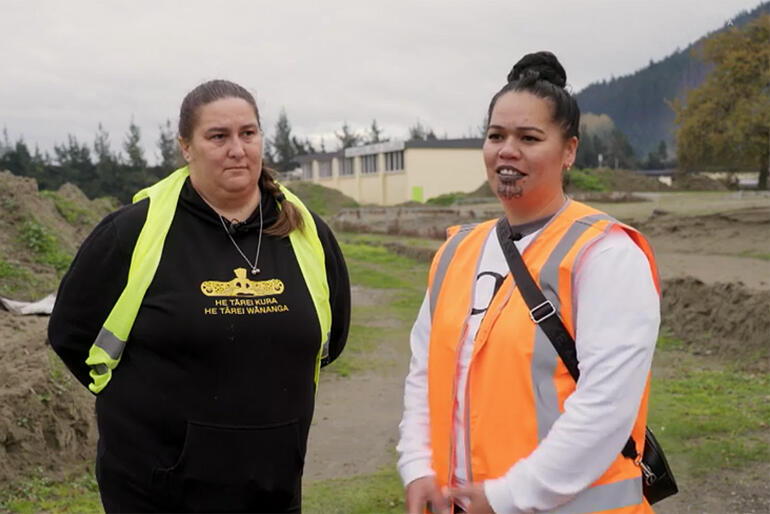
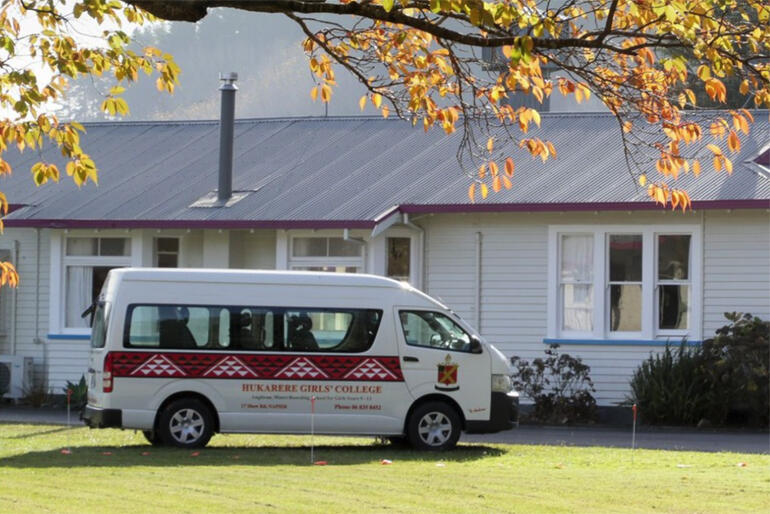

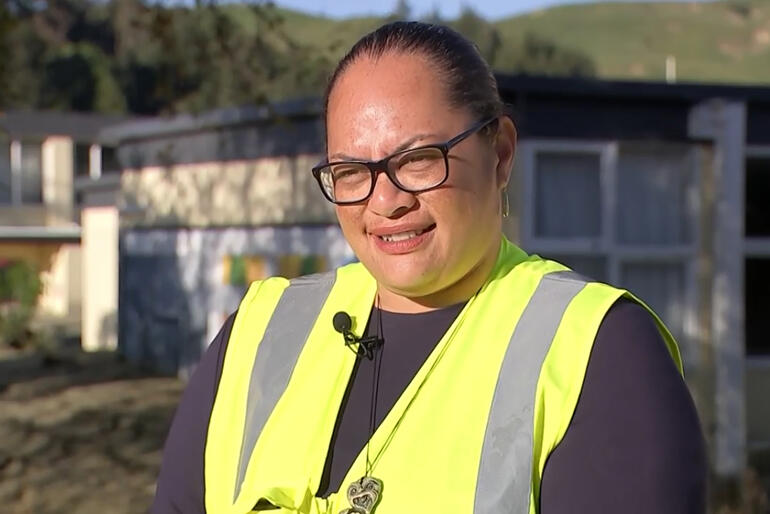
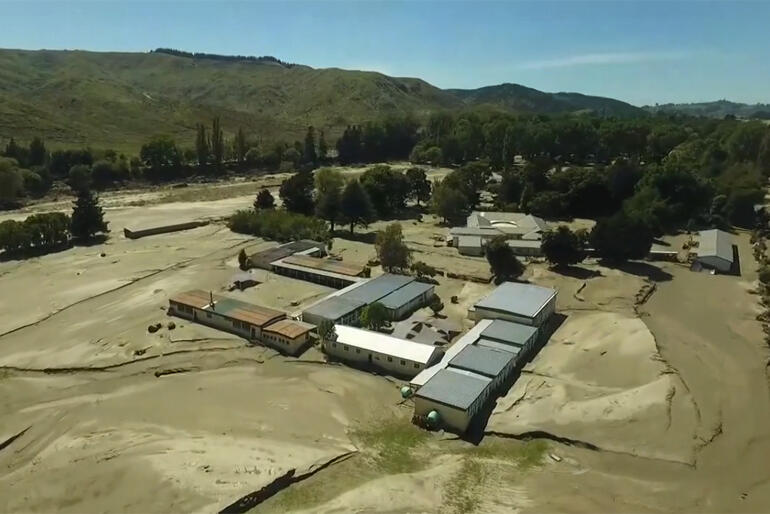
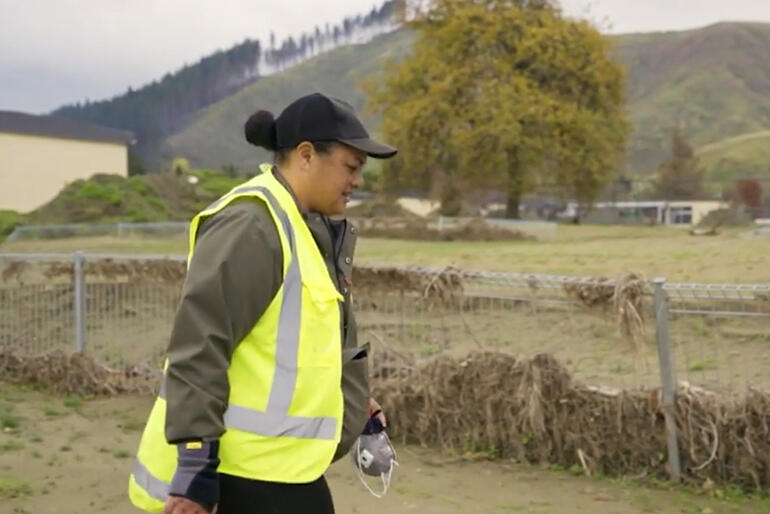

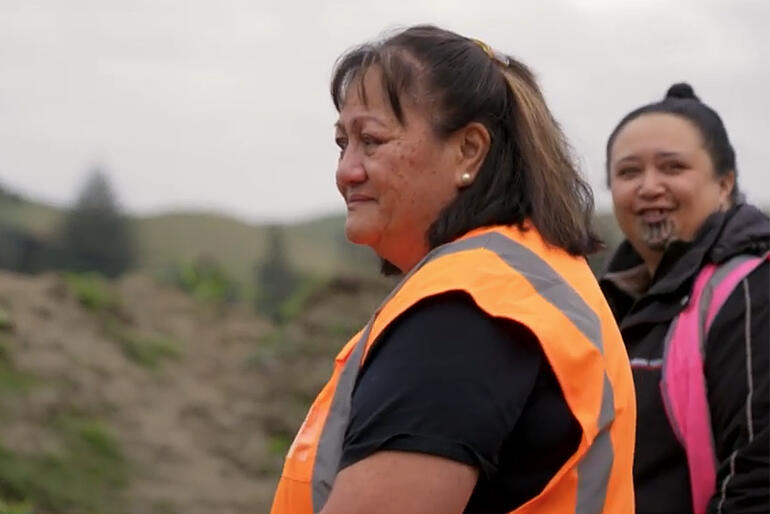

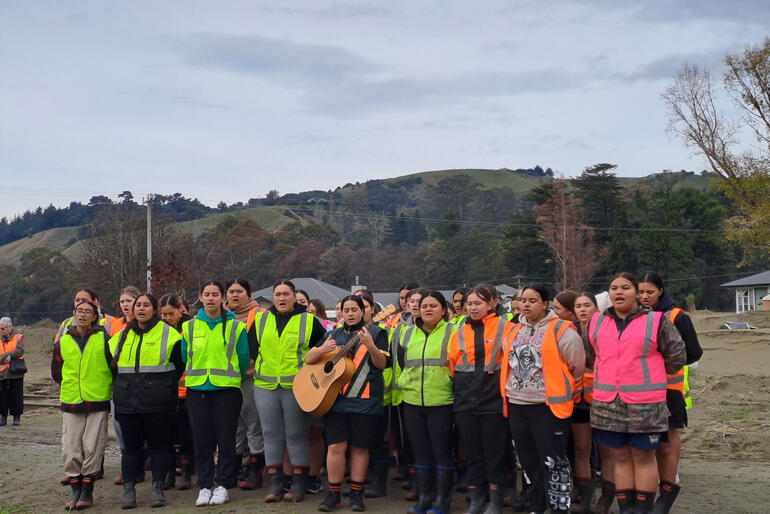

On the night of 13 February this year, Hukarere Girls’ College boarders evacuated with hours to spare before their Esk Valley home was overrun by an inland tsunami unleashed by Cyclone Gabrielle.
That night the Esk River burst its banks to pour through the historic Māori Anglican Girls’ school, across the church and district, leaving a wasteland in its wake, with uninhabitable buildings piled-high in contaminated silt.
Thankfully, neither students nor teachers were on hand to see the waters that raged through their school that night, but as it dispersed, it was clear that both school and hostel were write-offs. Almost all the personal belongings of students, teachers and staff on site were lost – along with computers, vehicles and school equipment.
Hukarere’s is now in a ‘meantime management’ phase says Mere Pohatu, who is helping the school implement its post-Cyclone strategy.
“Despite the shocking impact of the floods, the school has a lot to be proud of in how its staff, students and governing Board responded in their time of crisis.” Mere says.
Mere Pohatu is pleased to step up and she’s no stranger to building from the ground up. Over her career at the helm of Gisborne’s Te Puni Kōkiri office, Mere has held her finger on the pulse of Māori development in Ikaroa-Rāwhiti for more than thirty years.
Mere reports that back in February, Boarding Hostel Manager Amelia Kaui stood out as the hero of the night. It was Amelia who kept her eye on the rising river and turned her workplace safety training earnt over 11 years working on remote Aussie mining sites into lifesaving results for the school.
“What Amelia did was not only to get those 48 students and four staff out in time, but she kept calm – and kept everybody calm.” says Mere.
“There’s no doubt, that if they hadn’t evacuated, we would have been telling a story about deaths today.”
Amelia says that when Police came round to suggest people may wish to leave the valley, evacuation planning was well under way. Amelia remembers that she and Joleen Perry (a former head girl and now a Te Aute and Hukarere Trustee) had gone back over evacuation plans as recently as the day before the disaster.
“Our thinking was, if we evacuate and there is no need, that’s nothing lost. But if we don’t evacuate, and if any one of those 48 girls got hurt...well, I knew we couldn’t live with that."
* * * * * *
When Amelia did her second river level check that February afternoon, she logged a shocking rise of two metres – in two hours – and saw the river lap at the paddock edge like she’d never seen before. And all the while rain pelted down.
But rather than panic anyone, Amelia let the evening meal proceed – as she readied staff and girls for a double-quick exit.
“Tonight our evacuation is not a drill,” she announced at dinner, “This time it’s the real thing.” Up went the list of grab bag contents, and soon the juniors boarded the school’s three vans headed to Napier.
Hostel whaea Jessica Friis, Te Aroha Hawkins and Amelia got behind the wheels, while Natalya Campbell stayed with the seniors awaiting pick up on the second round. Meanwhile driving rain and surface flooding stretched that thirty minute journey beyond an hour.
Pukemokimoki Marae Civil Defence centre was their stop for the night, but by morning wake up call, rising water levels had compromised marae facilities and Hukarere needed somewhere else to stay.
Both Napier Girls and St Joseph's Maori Girls College offered them a place, so off they went to their sister kura, St Joseph’s.
As St Joseph’s kitchen laboured under the influx of 48 more students, Hukarere Board members Former Principal Lelie Pearcey and Board Chair Whitney Olsen-Miller turned out to bolster the cooking team.
“That’s the kind of commitment the Hukarere Board has to care for the girls.” says Mere.
With phones and power out, Amelia Kaui headed to Pak’n’Save’s flickering wifi signal to contact the school administrator and deliver the “all safe” message. It was only when she saw a plane fly overhead that she realised there was still a way out of Napier, which at that time had all roads out of action.
So that was it, 48 girls needed whānau to book 48 flights, which Amelia would queue up drivers and vans for, to get each girl home.
As Head Girl Zsana Dimitro watched Amelia crunching departure times, dates and numbers, she could see the previous days’ disturbed and sleepless nights catching up with her hostel whaea. She knew Amelia had already sent the other staff off to take their well-earnt sleep, but Amelia was keeping on.
That’s when Zsana stepped up and assured Amelia it was her time to sleep, Zsana would handle it.
“She really came up to that next level of manaakitanga.” says Amelia
“We would never ask or expect that role or responsibility from a student.”
“But Zsana knew that all of the staff were exhausted and she could see that there was no-one left to step in for me, so she did.” said Amelia.
Zsana then helped oversee every student’s return home, making sure each one was fed and ready to go at the right time: bags packed, lunch made.
“It was so helpful for our staff who were able to drive each departing girl (or group) to the airport without running after her – just knowing she would be ready.”
Later when Amelia was back on board and the remaining girls had moved to Te Aute College, Zsana still stayed on task till every last student had made it home.
...
With all students evacuated back to their whānau, Hukarere staff quickly got set up to teach online. Just one problem, most of the students’ computers were water damaged beyond repair, trapped in the ruined school, or simply swept away.
That’s when the Anglican Schools’ Board put their heads together and sourced sixty brand new laptops for every student and staff member at Hukarere, so that learning could resume.
Still major challenges remained.
Like a number of Hukarere staff, Amelia Kaui had lost her own household vehicle in the flood, which was carried away by floodwaters and left wedged in a treetop. Many Hukarere staff also came home to houses or sections inundated and piled with silt.
For the students, especially the boarders, they not only lost daily in-person life with their classmates, but they lost the stable routine of hostel life, shaped by living and learning through Oranga Ake, which integrates Mihinare (Māori Anglican) whakapapa, faith and values into the life of the school.
Amelia says that when she announced they would evacuate on the night of the floods, an almighty cheer had gone up. But that mood definitely changed, as those same girls realised how much they’ve missed being together at Hukarere.
That’s why, with a learning hub in place, a new hostel and school site just coming into view, Hukarere is looking forward to an interim phase that brings the tauira back together, even as their new school – to be built on a hill – is moving onto the horizon.

















Comments
Log in or create a user account to comment.